Sheridan’s Pinoy Illustrators
Sheridan’s Pinoy Illustrators
Graduates install works in gallery and online
By Beatrice S. Paez
TORONTO–Twitter has been abuzz with an avalanche of tweets tied to Sheridan College’s illustration grad show, also known as #illustrationism in Twitterspeak.
Among the graduates are young Filipino artists, Allen Ribo and Joanna Sevilla, who belong to a new crop of illustrators seeking to make their mark with the help of social media.
Illustrationism was designed to exhibit the works of the new graduates beyond the confines of a gallery space. It stretches the conversation further by inviting illustrators and their cheerleaders to tweet their favourite illustrations under the hashtag #illustrationism.
Ribo himself tweeted one of his signature pieces, which he says was inspired by an article he read about the conflict in Syria. His “Liberation” piece sought to capture the Syrian people’s struggle to pursue a better future.
Using social media is no doubt part of a young illustrator’s toolkit.
With a portfolio boasting a variety of styles and subject matter, Ribo relates his work to the act of conversing on different issues. They are more a reflection of his diverse interests, rather than an expression of a certain identity, he explains.
Bound together, his works are playful and thought provoking, and display his thirst to communicate a range of narratives. His favourite, “Old Congress” is a statement on the state of government, while “Imperfect” celebrates adversity.
Raised in Mississauga, Ont., Ribo found his footing as an illustrator at 20, when he enrolled in Sheridan’s illustration program. Breaking into the program wasn’t an easy feat, but the third time was a charm. “When I started this I was basically told that I was passionate but I couldn’t make it,” he told The Philippine Reporter. “There were a lot of times when I thought, ‘What am I doing this for?’”
There were a few people who could have dashed his dream but there were many others — fellow illustrators and his family, who rooted for him. While traces of his roots as a Filipino do not seep through his work, he credits it for giving him the drive and work ethic that got him to where he is today.
“You just wake up, you work hard and are invested in everything you do,” he related. “When you’re doing something you love, you have nothing to complain about. The worst problem is looking for the work. Everything else will work out.”
Sevilla, a fellow graduate and a full-time doodler since she was a child, has also turned her hobby into a career pursuit. Her whimsical and spirited narratives could have easily been mined from a child’s imagination.
Colourful, detailed and full of texture, her illustrations seek the company of a text written for children, which is the direction Sevilla is headed for.
“I like how children’s stories can affect kids, you grow up with it and it stays with you [even] when you’re older,” said Sevilla. Growing up, she couldn’t shelve her favourites — Amelia Bedelia, Madeline and Winnie the Pooh. “The pictures can influence you in such a way that it helps your imagination grow.”
Having the talent and passion is one thing but Sevilla said her learning experience at Sheridan taught her that in illustration, spinning your work into stories that connect and resonate with people is key.
Outside of the classroom, Sevilla has also taken the time to explore her heritage. A design internship at the Kapisanan Philippine Centre, a youth-led and community-based organisation exposed her to the works of other young Filipino artists.
She hopes to help make the art of young Filipinos more accessible to other youth, “[I learned] how you can you take your voice, which can be small, and reach out to other people.”
Like her work, which combines digital and traditional media and ventures into abstract territory, she says Filipinos are also a composite of many cultural influences. “I learned we’re kind of a mish-mash of everything. I want my art to be a little bit of everything.”
Though she’s all grown up and ready to embark on the next leg of her career, her piece “Growing Up” takes a more nuanced view on the exit from childhood. Taking cues from a passage by French-Cuban author, Anaïs Nin, “Growing Up” expresses the push and pull of getting older, but not necessarily wiser.
She quotes Anaïs Nin, “We are relative. We are mature in one realm, childish in another. The past, present and future mingle and pull us backward, forward, or fix us in the present.”
Ribo is also bracing himself for the challenges ahead, but he looks forward to the day when he can bridge both his passions — working on his own graphic novel and landing a spot for his illustrations in the New Yorker.
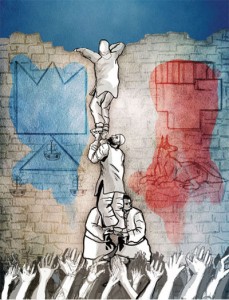
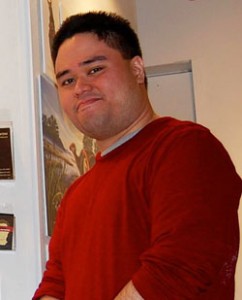
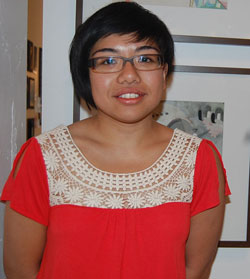
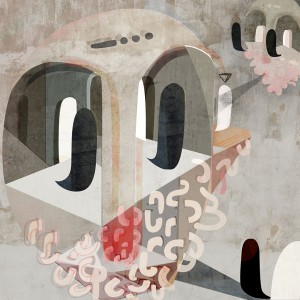
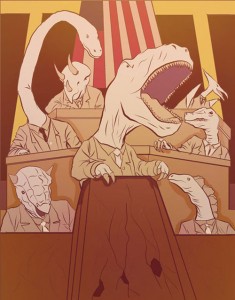
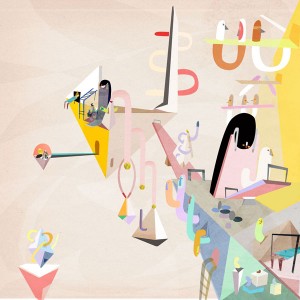
Comments (0)